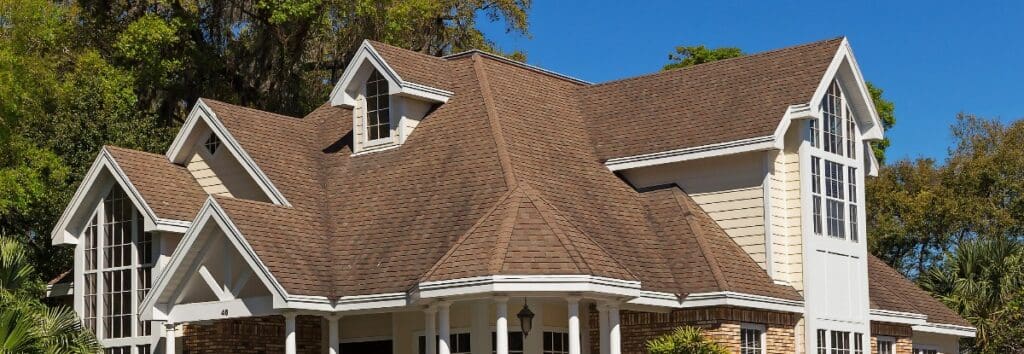
Published on June 19, 2019
Roof valleys are the seams where two roof faces come together. They can be both helpful and problematic. In fact, if you speak with an experienced roofer, they may tell you that these are some of the most problematic areas of a typical roof.
Why? Although valleys are helpful in diverting water away from your roof, they’re also prone to collecting debris — pine needles, dirt, leaves, etc. — and it’s not uncommon for roofs to leak where there are roof valleys. To prevent leaks along roof valleys, roofers typically apply nonpermeable materials, such as ice & water guards, where the valleys intersect.
Should metal be used for roof valleys? Linings made of metal are effective at preventing moisture intrusion. But what about the valley itself?
About Roof Valleys
First of all, roof valleys are where expert roofers do their best and most delicate work on your roof system. Valleys can become overloaded with a tremendous amount of water. In addition to the debris mentioned above, they can also become inundated with snow and ice in wet, northern climates.
There are three methods of types of valley installation:
- Woven. This method leaves no exposed areas because the two sides of the valley are blended together. Most experts recommend using only 3-tab shingles for woven valley applications.
- Closed-cut. This visually appealing application is used with asphalt shingles.
- Open. This valley installation uses metal down the center of the valley.
Open Metal Valleys
So, should you use metal for your roof valleys? There are several unique concerns with metal roof valleys. However, each of these problems can be eliminated with proper and professional installation. Typical issues with metal roof valleys include debris collection, improperly lined shingles, faulty underlayment, and problems with cascading water flowing across the valley and beneath shingles on the adjacent slope.
One method of dealing with the special problems of metal valleys is the installation of valley flashing. Roofing contractors may recommend flashing when they’re concerned that moisture will penetrate the roof between joints. Flashing helps create an impermeable seal, but homeowners will still need to keep a close watch on the channels to make sure they don’t get clogged with debris, which can weaken and corrode the flashing.
If you notice that your ceilings have become stained in the area beneath a metal valley, then this is a clear sign that the valley has rusted through.
Still, using metal for roof valleys has proven to be a popular choice among roofing experts.
“Provided the rest of the roofing shingles were properly installed and are performing properly, my experience has been that an open valley system holds up better over time,” says Jeff Tessaro of IKO roofing company. “And, if problems with roof leaks or other damage occur years later, an open valley system is often easier to repair or replace.”
Warner Roofing & Construction: Your Local Roofer
If your home’s roof has more than two faces, then you have roof valleys that need to be protected and maintained. Metal is durable, versatile, and provides a longlasting solution to problems that can arise with roof valleys.
Contact Warner Roofing & Construction today to get started on a conversation about how best to protect your roof and the valleys that hold it together.